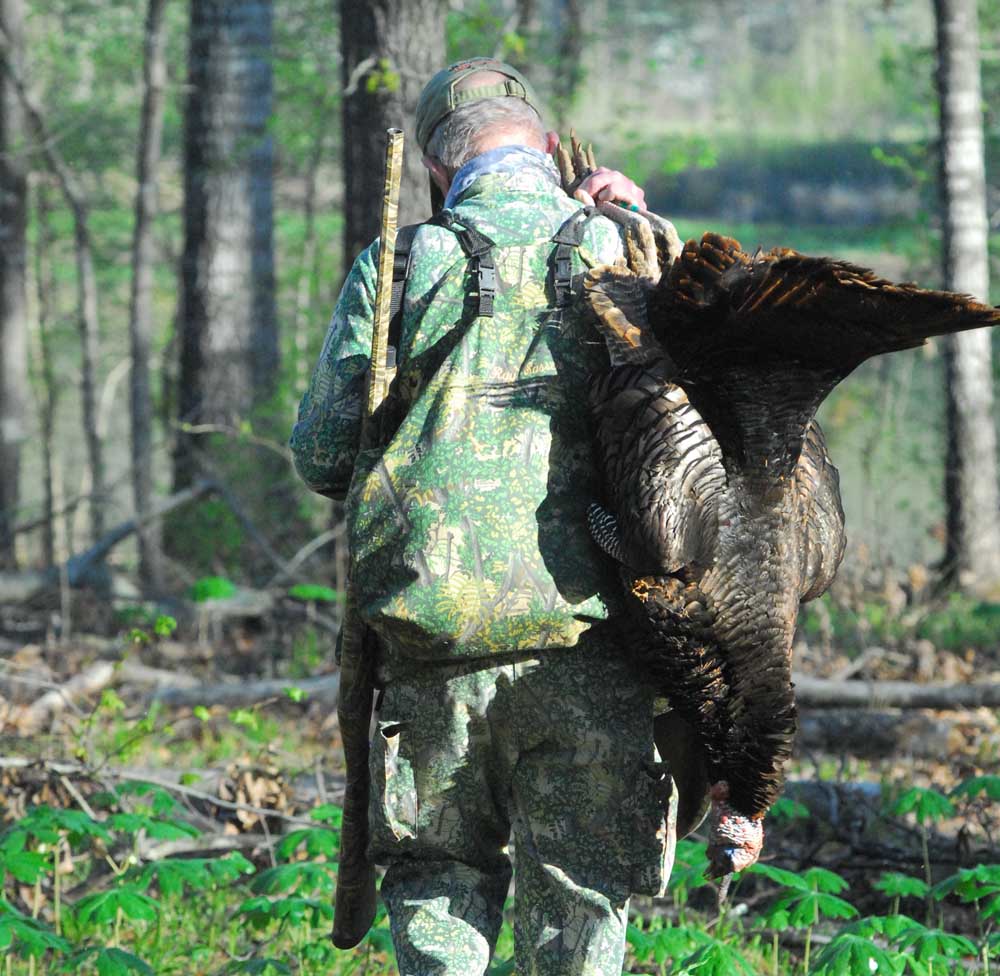Try, Try Again: Turkey Restoration Program Continues Across East Texas
Published 9:17 pm Saturday, April 3, 2021

- Although Texans have been able to take a limited number of Eastern wild turkeys during a spring season from earlier restocking programs, the Texas Parks and Wildlife Department continues attempts to bring the birds back.
While most hunters today probably do not know it, there was a time where there were not white-tailed deer in East Texas like there are now.
With settlement and a massive harvest of first-growth timber, deer were gone by the early 1900s.
To get to the quality of hunting there is now, the Texas Parks and Wildlife Department began restoration efforts in the Pineywoods and Post Oak regions in the 1930s and continued into the 1990s. In all more than 17,000 deer were released in the two regions.
Since 2014 the department has been undertaking a similar project with wild turkeys. Since jump-starting the restocking program with super stocking releases, 938 birds had been released in nine counties until this year.
Texas is dependent on other states for the turkeys, and only a few states are able to help. Perceived wild turkey population declines across the southeast have caused some states to not be able to help. Others can only trap excess or nuisance birds from places like neighborhoods or airports, and trapping success is dependent on birds coming to feed where capture nets have been set up.
This year’s release season started slowly, but picked up toward the end.
“We have released 107 Eastern wild turkeys at three sites in Angelina, Franklin, Titus counties,” said Jason Hardin, TPWD’s turkey program leader, of this year’s releases.
Hardin said last year Texas received 80 birds, enough for three partial stockings. A fourth site along the Neches River in Angelina County had to be put on hold.
Wild turkeys were once commonplace in East Texas, but because of market hunting and a limit of up to 25 per day, there were probably more black bears than turkeys in the region when the season was halted in 1941.
TPWD has attempted to reestablish Eastern turkeys several times including from 1979 and 2003 when approximately 7,000 birds were released in 58 counties. After waiting up to 10 years, a number of counties were open to hunting. Almost 400 Eastern turkeys were reported taken in 2005, the best year on record, across 43 counties that were open at the time. The season has been closed in 30 of those counties, however, Hardin said there were 195 toms taken last spring in the remaining counties. That was a 30% increase from the previous season, and possibly the result of more hunters getting out during the COVID-19 lockdown.
The previous stocking effort is considered a wash because the releases included just three males and 12 hens. The small number of birds was a problem because often the males would be non-breeding age or one or two were lost to predators or disease shortly after release. With release sites often too far apart, the remnants of one stocking could not join with another to overcome the setbacks.
Research led the department to the super stockings that include up to 20 toms and 40 hens per location. Instead of patchwork releases, stocking sites have been within close proximity of others.
Another change is in transitional habitat along the Trinity River where the department has been releasing a mixture of Eastern birds and Rio Grande turkeys. The Rios are Texas birds making them much easier to obtain and this year some 167 were released in Kaufman and Navarro counties.
“I think it is a mixed bag,” Hardin said of the super stocking results. “There are probably some things we should expect.”
Although production and recruitment has been recorded at all of the super-stocked sites, some appear more successful than others. Hardin said he is getting good reports of poults and jakes along the Trinity in Anderson, Henderson, Kaufman and Navarro counties, and at a number of the sites where only Easterns were stocked in Anderson, Camp, Cherokee, Franklin, Henderson, Jasper, Rusk, Titus and Trinity counties. In others, he is not hearing as many reports but believes some of that has to do with how much individual landowners are looking. The best reports come from hunting clubs with a lot of activity and game cameras operating.
With what he has learned, Hardin has tightened up release sites even more so that they touch each other in an attempt to help local populations overcome a year or two of poor production. One thing that has been learned from telemetry studies is that after release, individual birds may travel miles from the release site, but they eventually find their way back.
Hardin hopes emerging technology using drones allows biologists to get a better handle on the number of birds in the future.
In something of a setback for Eastern turkey hunting, the spring season in Panola County will be closed beginning in 2022 because of a lack of birds. In contrast, Hardin said he may push for openings in all or parts of some of the restocked counties beginning in 2023. Partial openings within the counties and short seasons are the most likely option.
In East Texas, this year’s season runs April 22-May 14. The Rio Grande season has already opened in the South Zone and will continue until May 2. The North Zone opened Saturday and continues until May 16.







